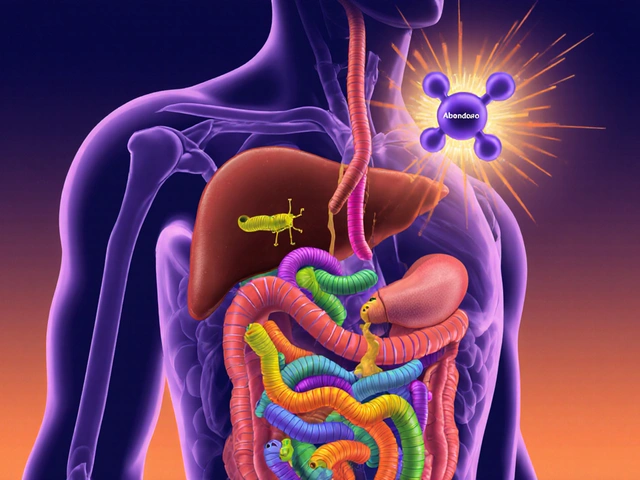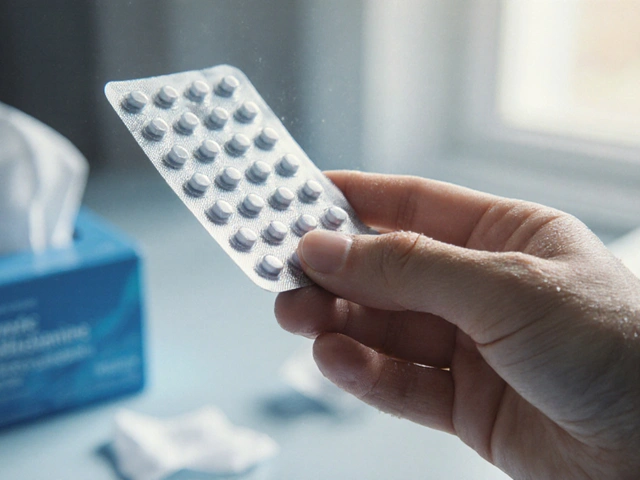Albendazole: What It Is and How It Works to Fight Parasites
October 28 2025Folic Acid: The Vitamin Your Body Can’t Do Without
When working with folic acid, a water‑soluble B‑vitamin (also called vitamin B9) that helps cells divide and grow. Also known as vitamin B9, it plays a crucial role in DNA synthesis and red blood cell formation. Many people don’t realize how pregnancy, the period when a woman carries a developing fetus and anemia, a condition marked by low hemoglobin levels are tightly linked to folic acid status.
Why Folate Matters Across the Life Cycle
First, folic acid supports healthy red blood cell formation, so a deficiency can lead to anemia. This link is a classic example of the semantic triple: folic acid → supports → red blood cell formation. Second, pregnant women need higher levels because the nutrient reduces the risk of neural tube defects (NTDs) like spina bifida. In plain terms, adequate folic acid intake → reduces risk of → neural tube defects. Third, studies show that regular folic acid intake improves heart health by lowering homocysteine, an amino acid linked to artery damage. That gives us the triple: vitamin B9 → improves → heart health.
Beyond these big picture benefits, folic acid is involved in everyday processes: it helps synthesize neurotransmitters, supports immune function, and works with other B‑vitamins (B6, B12) to keep metabolism humming. If you’re curious why some multivitamins label the ingredient as “folate,” that’s just the natural form found in foods, while the synthetic supplement is called folic acid.
So, how much do you need? The general recommendation for adults is 400 µg daily. For women trying to conceive or who are pregnant, the guideline jumps to 600 µg before conception and 800 µg during pregnancy. These numbers come from large public‑health studies that showed a clear drop in NTD rates when women met the higher target. If you fall into a high‑risk group—like having a history of NTD‑affected pregnancies or taking certain anti‑seizure meds—your doctor might suggest up to 1 mg per day.
Getting folic acid from food is easy: leafy greens (spinach, kale), legumes (lentils, chickpeas), citrus fruits, and fortified grains are all rich sources. One cup of cooked lentils provides about 358 µg, almost the full daily dose for most adults. If you’re not a fan of greens, a daily prenatal or “women’s health” supplement usually contains the needed amount plus a safety buffer.
Some medications can interfere with folate metabolism. For example, methotrexate, a drug used for certain cancers and autoimmune conditions, blocks folic acid’s action, which is why doctors co‑prescribe folic acid supplements to prevent side effects. Anticonvulsants like phenytoin and carbamazepine also lower folate levels, so patients on these meds often need higher supplemental doses.
Now, you might wonder: does extra folic acid ever cause problems? In most healthy adults, taking up to 1 mg daily is considered safe. Very high doses (above 5 mg) are generally reserved for specific medical reasons and should only be taken under supervision because they could mask a B12 deficiency, leading to nerve damage.
Putting it all together, folic acid is a small molecule with a big impact. It supports the creation of new cells, protects unborn babies from serious birth defects, helps keep your heart vessels clear, and prevents certain types of anemia. Whether you get it from a plate of beans, a handful of spinach, or a modest supplement, staying within the recommended range is a simple way to boost overall health.
Below you’ll find a curated set of articles that dive deeper into related topics—how nutrients interact with medications, practical tips for managing side effects, and comparisons of popular health supplements. Use them to fine‑tune your own regimen and make informed choices about folic acid and the broader world of vitamins.
 25 Oct
25 Oct
Boost Athletic Performance with Iron, Folic Acid, and Zinc
Learn how the iron‑folic‑acid‑zinc combo lifts stamina, speeds recovery, and boosts athletic performance safely and effectively.
Read More...




